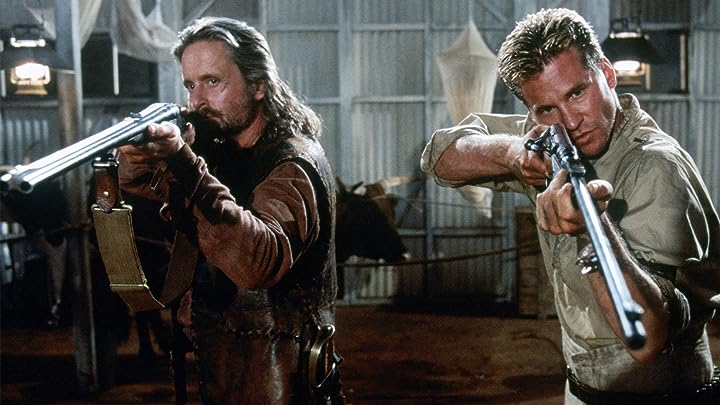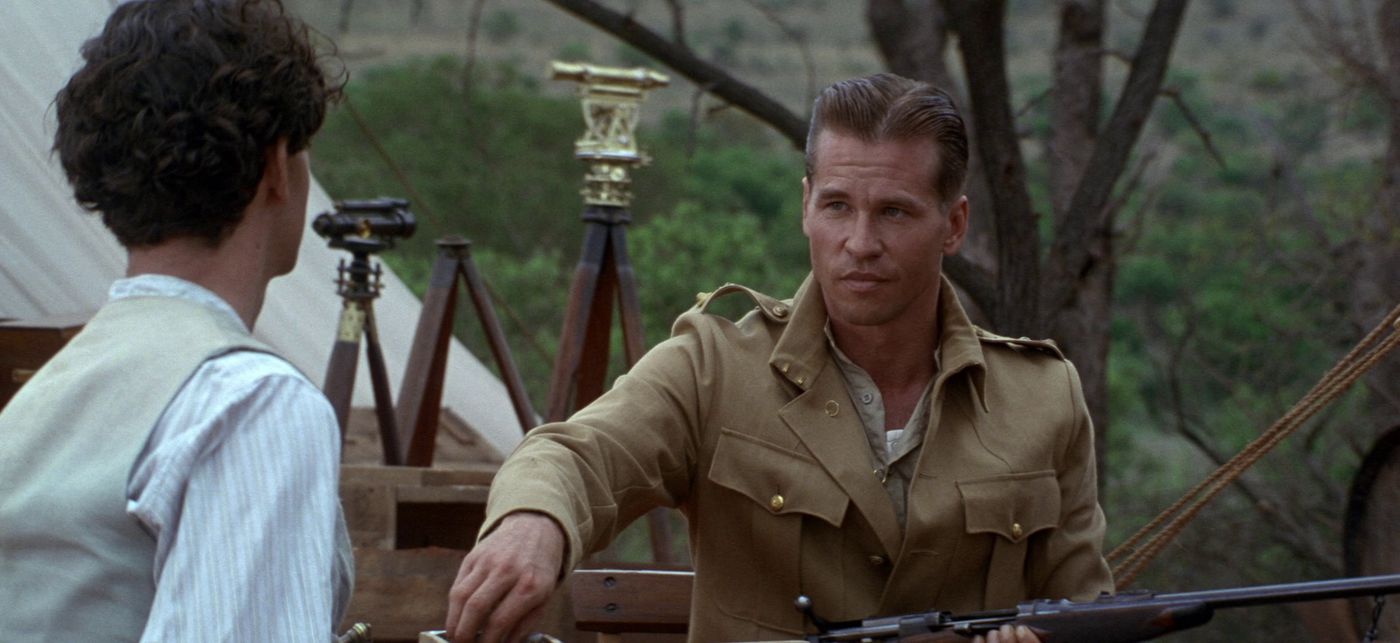Directed by the seasoned Stephen Hopkins, ‘The Ghost and the Darkness’ is an adventure thriller film that paints a vivid picture of Africa’s vast terrains. In the heart of Tsavo, Kenya, during the late 19th century, a railway construction crew is thrown into a whirlwind of fear and uncertainty. Two relentless lions, seemingly with a taste for human flesh, cast a shadow of terror over the workers, turning their daily lives into a suspense-filled survival game.
With the formidable Val Kilmer and the iconic Michael Douglas leading the cast, the intense narrative of the 1996 film and the palpable tension it evokes might make one question its origins. Given the historical backdrop and the raw human emotions on display, it’s easy to wonder if such a tale has roots in actual events. As we venture further, we’ll explore the true essence of ‘The Ghost and the Darkness’ and its connection to reality.
The Ghost and the Darkness is Based on Real-Life Incidents
The film’s narrative draws inspiration from the real-life terror caused by two lions (the Tsavo man-eaters) in the late 19th century. The screenplay, penned by the talented William Goldman, draws heavily from the book ‘The Man-Eaters of Tsavo’ written by Lt. Col. John Henry Patterson, the very man tasked with eliminating these lions’ threat. Notorious for their man-eating tendencies, these lions were responsible for the deaths of many railway workers in Tsavo, Kenya. In various interviews, director Stephen Hopkins has expressed his fascination with this harrowing tale.

Hopkins mentioned how the story’s blend of historical facts and raw primal fear resonated with him. He wanted to capture not just the external threat posed by the lions but also the internal conflicts and fears of the people involved. However, like many films based on true stories, ‘The Ghost and the Darkness’ isn’t without its cinematic liberties. While the essence of the man-eaters’ terror is accurately depicted, certain dramatic elements were added to enhance the film’s suspense and appeal.
For instance, the character Charles Remington (Michael Douglas), is a fictional addition. There’s no historical record of such a character being involved in the hunt for the Tsavo lions. His inclusion served as a narrative tool to heighten the drama and introduce a contrasting perspective to Patterson’s. Another deviation from reality is the exaggerated number of victims. While the film suggests that the lions killed over a hundred workers, historical accounts, including Patterson’s own writings, estimate the number to be closer to 35. Though not entirely accurate, this amplification was likely introduced to underscore the severity of the threat.
Despite these alterations, the film’s core remains true to the events it portrays. The Tsavo man-eaters’ reign of terror, the subsequent hunt, and the psychological impact on the workers and hunters are all depicted with a sense of authenticity. The film does a commendable job of transporting the audience to Tsavo in 1898, making them feel the palpable tension and fear. While ‘The Ghost and the Darkness’ takes certain creative liberties for cinematic enhancement, its foundation is solidly based on the chilling real-life events in Tsavo.
Read More: Best Adventure Movies of All Time


You must be logged in to post a comment.